Losar - Tibetan New Year
- Caroline
- Last Updated : 10/27/2025
Tibetan people call the Tibetan New Year “Losar”. Losar is not one word in the Tibetan language. Actually, it consists of two Tibetan words - “Lo” means year, and “Sar” means new. Losar is calculated based on the Tibetan calendar. It starts from the 1st of the first month of the Tibetan lunar calendar and lasts for fifteen days. In 2026, Losar falls on February 18.
Losar is the most important traditional festival of the year, and it is also the first Tibetan festival. At that time, each Tibetan family would reunite to hold a variety of activities to celebrate the arrival of the New Year, which is very lively. As the local people believe in Tibetan Buddhism, many customs of Tibetan Losar are related to Tibetan Buddhism and the festival is permeated with a strong religious atmosphere.
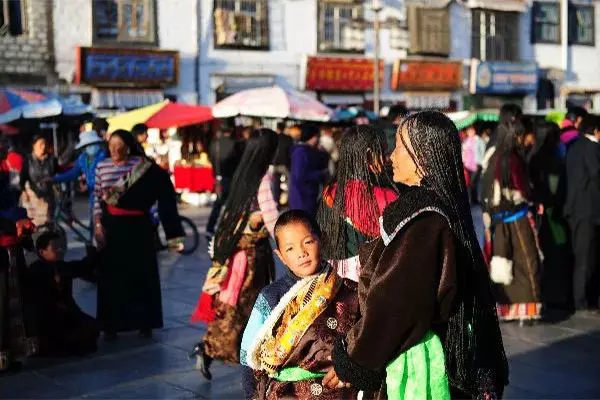
Losar is usually held during February and March when Tibet is closed to foreigners. Thus, international travelers have little chance to see such a big feast in person. However, you could learn it from this post and imagine the alive scene.
- Chinese name: 藏历年
- Tibetan name: Losar
- Time: January 1 to 15 in the Tibetan calendar
- Area: Lhasa, Tibet
- Origin: Offer sacrifices
- Meaning: Pray for a good harvest in the coming year
When is Losar Celebrated?
All the Tibetan festivals are based on the Tibetan calendar, so is the Losar. This festival starts from the middle of December in the Tibetan calendar to the 15th day of the first lunar month. The preparatory period is the preparation process. From the first day of the first lunar month to the fifteenth day of the first lunar month is the festival period.
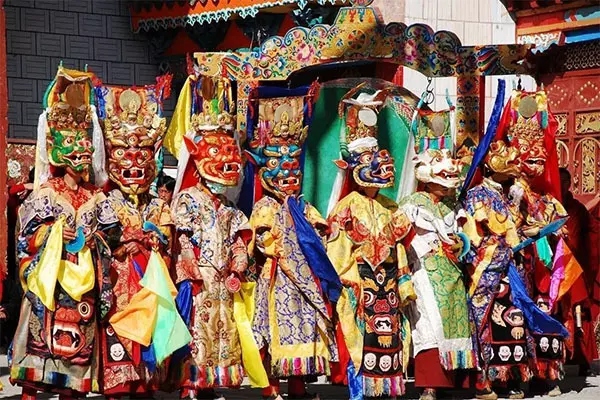
And it’s almost as same as the Chinese New Year, in mid-February of the solar calendar. The Tibetan calendar counts on 12 or 13 lunar months. So the Tibetan Losar might coincide with the Chinese New Year, one day apart, or one month apart, etc.
Historical Origin of Losar
Dated back to the old times, when there was no Tibetan Buddhism yet, Tibet was controlled by its original religion Bon. The ancient people had a big celebration in winter. They prayed for protection from deities. As time passed, this event was absorbed by Tibetan Buddhism and became an annual festival. In the 13th century, during the reign of the Sakya Dynasty, January 1st was set as the
beginning of the new year, which means the King's New Year. From then on, Losar has officially become an important traditional festival in Tibet and continues to this day.
Folk Activities of Losar
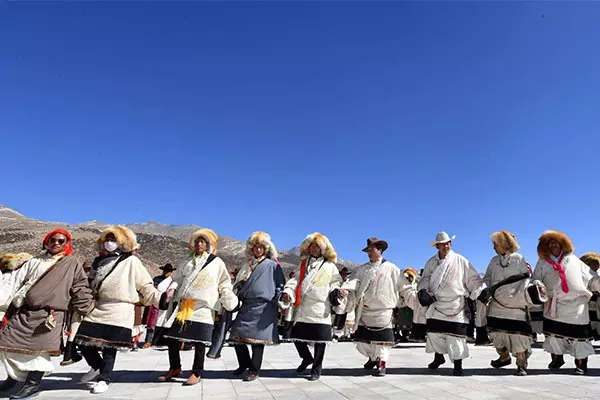
Like all the celebrations for a new year in the world, the Losar Festival is also a happy time with family together to bid farewell to the old year and usher in the new. Besides, as a minority nationality, nearly every single Tibetan is a good singer or dancer. Following their own nature, Tibetan people get used to expressing their emotions by singing and dancing. So, if you happen to travel to Tibet during this time, your ear will be fed with festive music all around.
The biggest difference between the Losar and the Chinese New Year is the continuous chanting as Tibet is a religious place where almost all people have faith in Tibetan Buddhism. Tibetan people believe that evil demons exist everywhere. So, at the Losar Festival, there is a very important activity for dislodging evil. They dress up in their folk costumes, chant Buddhist scripture and pass fire torches on the street. Expel the evil while praying for good luck and blessings for the coming new year.
Besides the above activities, there is another interesting one, the antimasque. For example, the deer dance, or the funny fight between the king and his subordinates, can make people laugh out loud.
In one word, the Losar Festival is a celebration full of music, dance, and joy.
Preparation of Losar

Preparations for the Losar start from mid-December of the previous year. Every family will place the tsampa, fried wheat grains, ghee, and highland barley as sacrifices at home. Also, soak a bowl of highland barley seeds in water to make them grow an inch or two long seedlings in the New Year season. All these were sacrificed in the center of the altar at home to pray for a good harvest in the coming year.
Tibetan people will have a thorough sweep-up to make sure that everywhere in the house is clean enough, especially the kitchen. It implies cleaning away the dirt or the bad luck of the old year and being ready to greet the new year. Tibetan people consider the kitchen the most important part of the house because food is made there. So, they will pay particular attention to it when cleaning the house, and even the chimney will be swept dirt-free.
How is Losar Celebrated?
There are three days in total to celebrate the Losar Festival. So, what will the Tibetan people do?
New Year's Eve
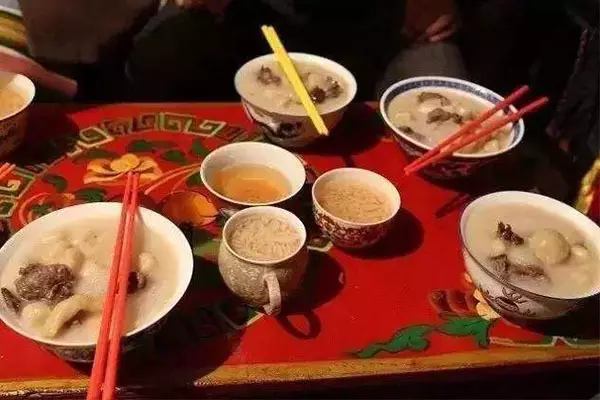
On New Year’s Eve, the most fun rituals are to eat 'Gutu' noodles and exorcism rituals to greet the Losar.
Gutu is a Dough Ball, of which the skin is made of highland barley powder and the filling is various stuff, such as rice, salt, chilies, wool, or coal. Don’t be surprised by the stuffing. They have meanings. The Dough Balls will be handed out after being cooked. If someone eats rice or salt in the ball, it’s a good sign to be fortunate in the near future. This is both a kind of divination and entertainment, which makes the whole family happy.
After the Gutu Banquet, there's an exorcism ritual. The male host lights the torch and turns around in every corner of the house, shouting 'Get out, get out...' and then throwing the torch and the prepared ghost food at the intersection to drive out the year's unsatisfactory and bad luck.
Losar Day 1
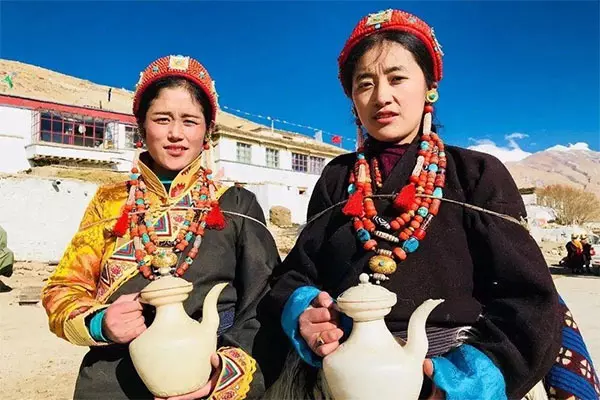
On the first day of the Losar, there will be a 'water grab'. The housewife needs to carry back the first bucket of water in the New Year. According to Tibetan tradition, the first bucket of water on the first day of the Tibetan calendar is 'golden water', and the second bucket of water is called 'silver water', which indicates good fortune, luck, and wealth. When the sun rises, the people in costumes have eaten several festive foods in order of age. At that time, neighbors would go to each other's door by holding 'Chema' to bless the others, respect highland barley wine, and recite the long-held 'Tashi Del Pin Songcuo' and 'Emma Padragong Kangsang', etc., which represent auspiciousness, health, happiness, and harmony. After that, the whole family will gather behind closed doors. On the first day of the New Year, many farmers and herdsmen who believe in Buddhism would also visit the Jokhang Temple in Lhasa to pray for peace and health in the New Year.
Losar Day 2
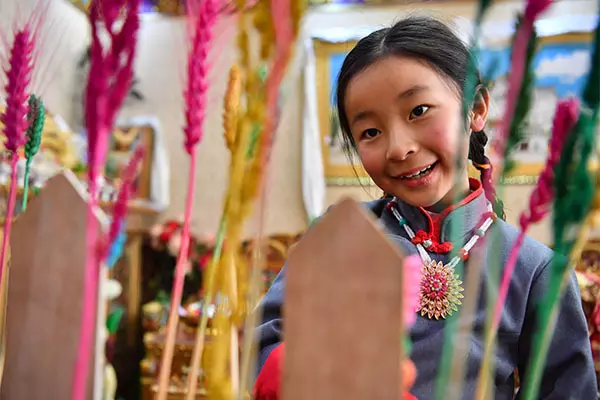
From the second day of the Losar, friends and relatives began to visit each other for New Year greetings, which lasted three to five days. As soon as the guest and the host meet, they will bless each other with 'Tashi Delek' and give each other a Khata, and the host will ask the guest to enter the house and sit down. At this time, the host will bring 'Chema', and the guest will pinch a little bit of the highland barley and tsampa in Chema and spread it into the air, praying to heaven, earth, and gods, etc., and then pinch a little more in the mouth. Next, the host will bring highland barley wine and wine bowls, and invite the guests to drink. To show respect for the host, guests should bottom up the drink for the third time. If you can't finish drinking, the hospitable host will entrust relatives and friends to sing to persuade you to drink. After singing the toast, the guests must finish the glass of wine. During the Tibetan New Year, in the square or on the open grass, you can also often see Tibetan men and women in costumes gather in a circle to dance the Guozhuang and Xianzi to celebrate the New Year.
Losar Day 3
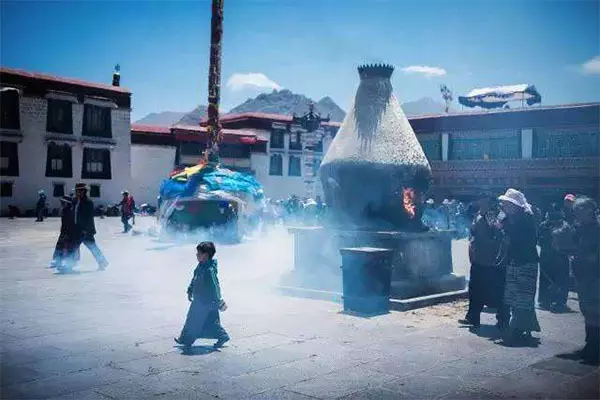
On the third day of the Losar, it is called ‘Yosei’ in Tibetan, which means offering sacrifices and prayers at high places. People from Lhasa will go to the roof balcony to burn incense and put new prayer flags on a corner of the roof. The neighbors once again exchange their blessings, respect each other with Chema and barley wine, sing, and dance together on the roof balcony or courtyard. Many people also travel in groups to the front of the Jokhang Temple and the Baoping Mountain in the east and Yaowang Mountain in the west to burn incense, insert prayer flags, and pray for blessings.
After the 3-day celebration, the Tibetan Losar will continue to be celebrated until the fifteenth of the first month of the Tibetan calendar.
The Timetable of Tibetan New Years
| Year | Tibetan New Year Falls On |
| 2020 | February. 24th |
| 2021 | February. 12th |
| 2022 | March. 3rd |
| 2023 | February. 21st |
| 2024 | February. 10th |
| 2025 | February. 28th |
| 2026 | February. 18th |
Recommended Tour Packages
Email response within 0.5~24 hours.



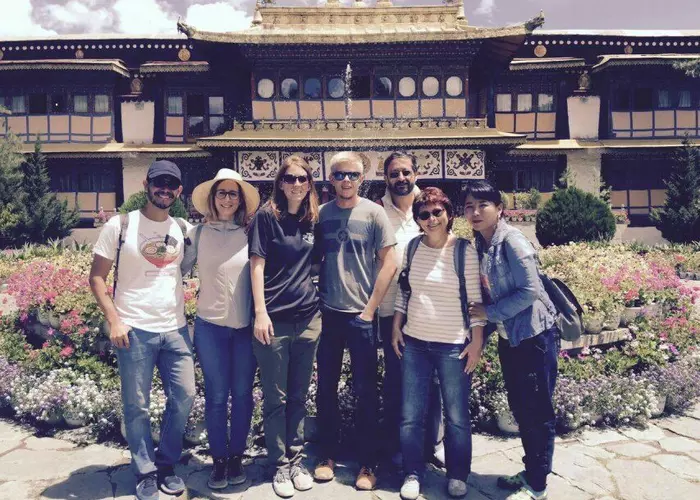
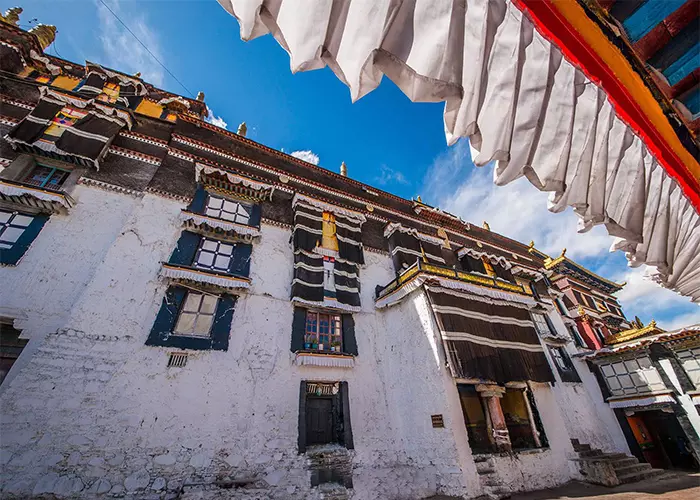
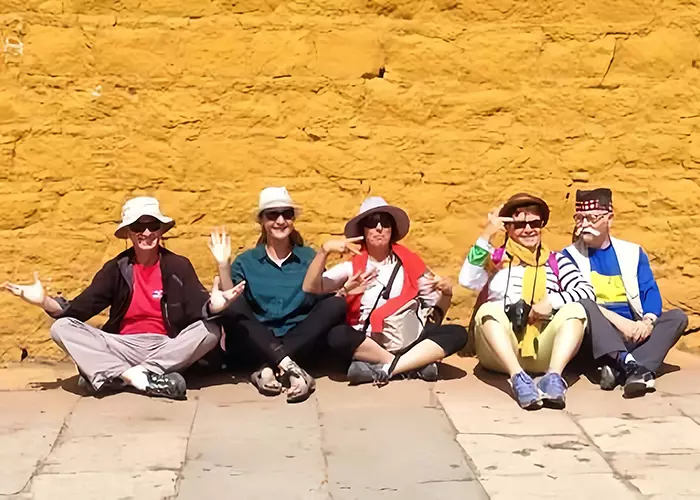
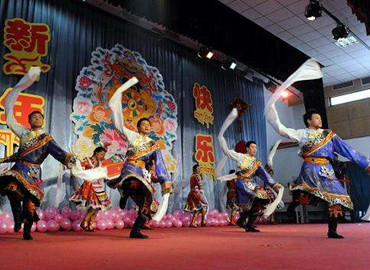
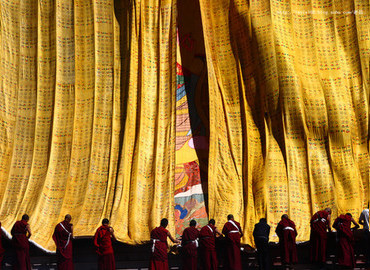
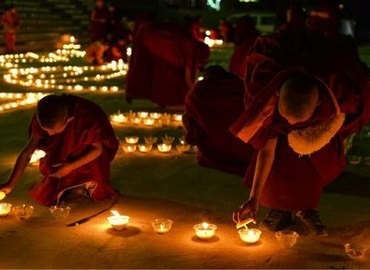
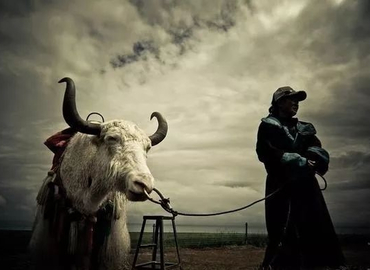

Typically Asked Questions from Our Clients
Asked by Andr***
Greetings from Alaska. My wife, my daughter (4 years old), and myself would like to travel to Lhasa for Losar in 2020. We already purchased our flights to Shanghai. Now we start the process of submitting paperwork for Chinese VISA. We have some questions:
1) When we submit for Chinese VISA, should we specify we also plan on traveling to Tibet?
2) Is there an additional process for gaining permit to Tibet?
Thank you, we look forward to hearing from you,
Andrew
In your inquiry, you mentioned you would like to travel to Lhasa for Losar in 2020. We can arrange a tour for your family. Tibetan new year starting from Feb.24th, you can take a train or plane from Shanghai directly to Lhasa. When do you plan to arrive in Shanghai and how many days do you plan to spend in Tibet? To answer your questions, 1) When we submit for Chinese VISA, should we specify we also plan on traveling to Tibet? Please don't mention Tibet in your application. For sometimes, the China embassy may request you to present Tibet Tourism Bureau Permit (TTB); but here in Lhasa, we have to have China Visa first to apply the TTB permit for you. so really, it's an egg-and-chicken bureaucratic error. Therefore, it's best that you don't mention Tibet while applying for a China visa. 2) Is there an additional process for gaining a permit to Tibet? Yes, please book your Tibet tour with us first; then we will request a copy of your passport and China visa to apply for a permit from the Tibet tourism bureau. After the permit is issued for your family, we will either express it or email a copy to you.
Asked by Pr***
Kindly let me know what kind oof hotels , air travel etc be used during great Tibet tour ?
Thanks
In your inquiry, you mentioned you would like to view the Losar festival in 2020. Tibetan new year festival starts on Feb.24th. I suggest you arrive in Lhasa at the latest on 23rd. There are three days total to celebrate Losar Festival. How long do you plan to spend in Tibet? And how many people are there? Air travel is a popular way for foreigners. We can help you book the air ticket. Please identify a stopover city in China first, like Beijing, Chengdu, Xi'an, etc. There will be a direct flight from these cities to Lhasa. After you identify the stopover city, you can decide on the flight schedule. For hotels in Lhasa, an economic 3-star hotel, comfortable 4-star hotel, and luxury 5-star hotel are available. Both the 3-star & 4-star accommodations we arrange for our clients have good locations and services. But Tibet relatively lags behind other provinces in China. Thus, the quality of accommodation is not the same as in Beijing, Shanghai or Chengdu. The 4-star accommodations are more comfortable with better facilities and environment. So, I suggest you choose the 4-star or 5-star class if your budget is not tight. Here is the hotel list for your reference, https://www.greattibettour.com/tibet-hotels